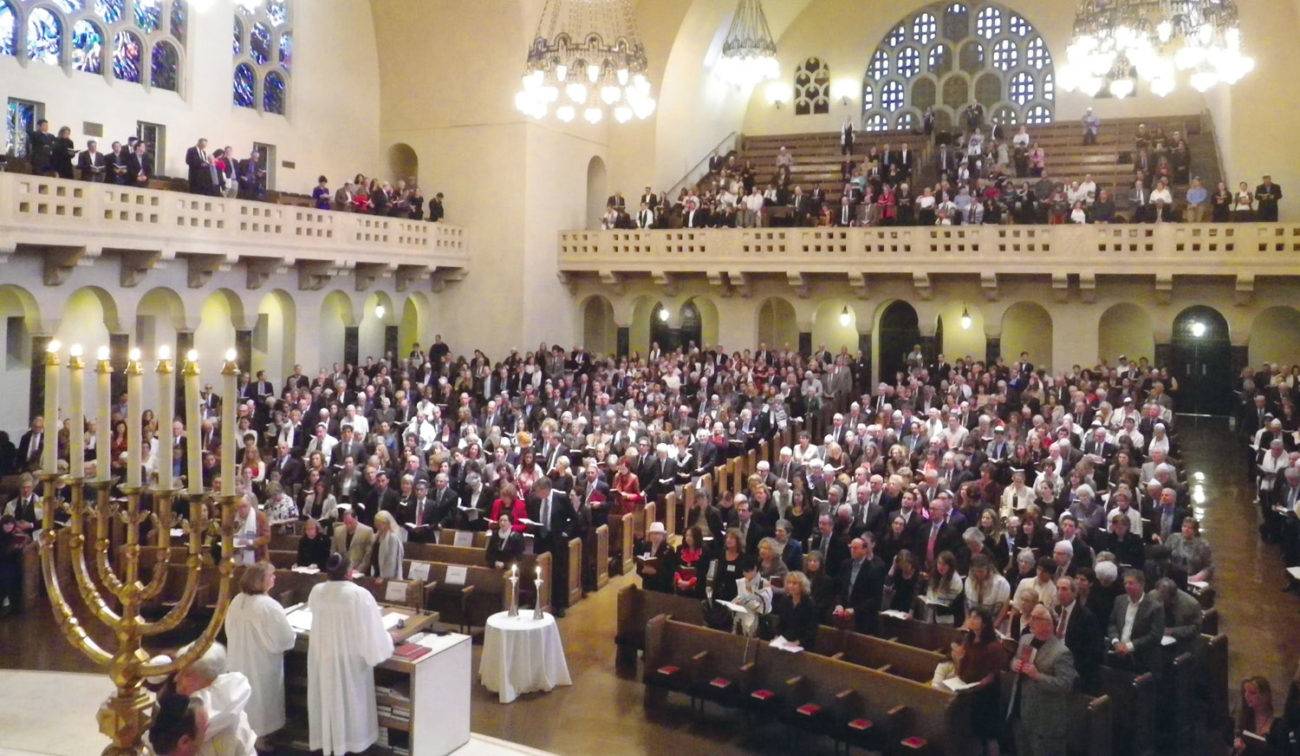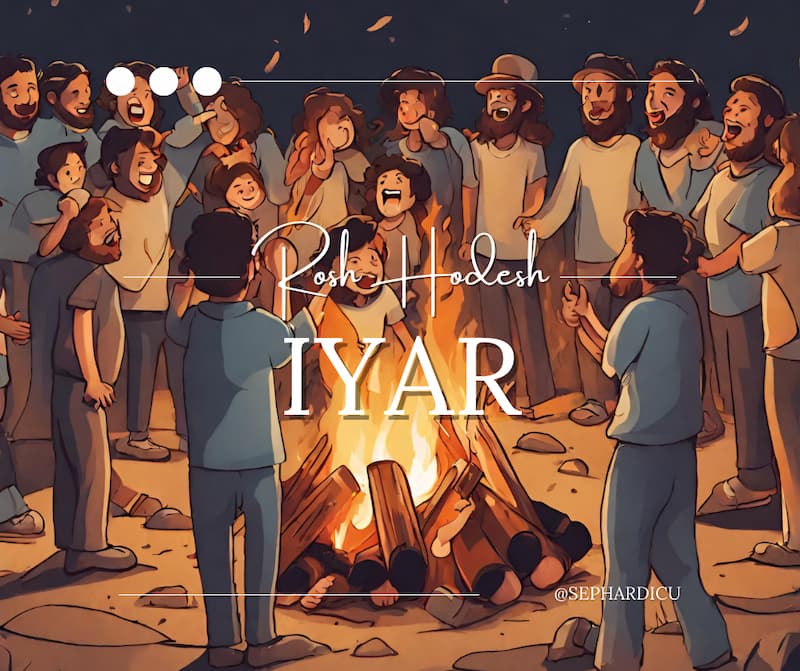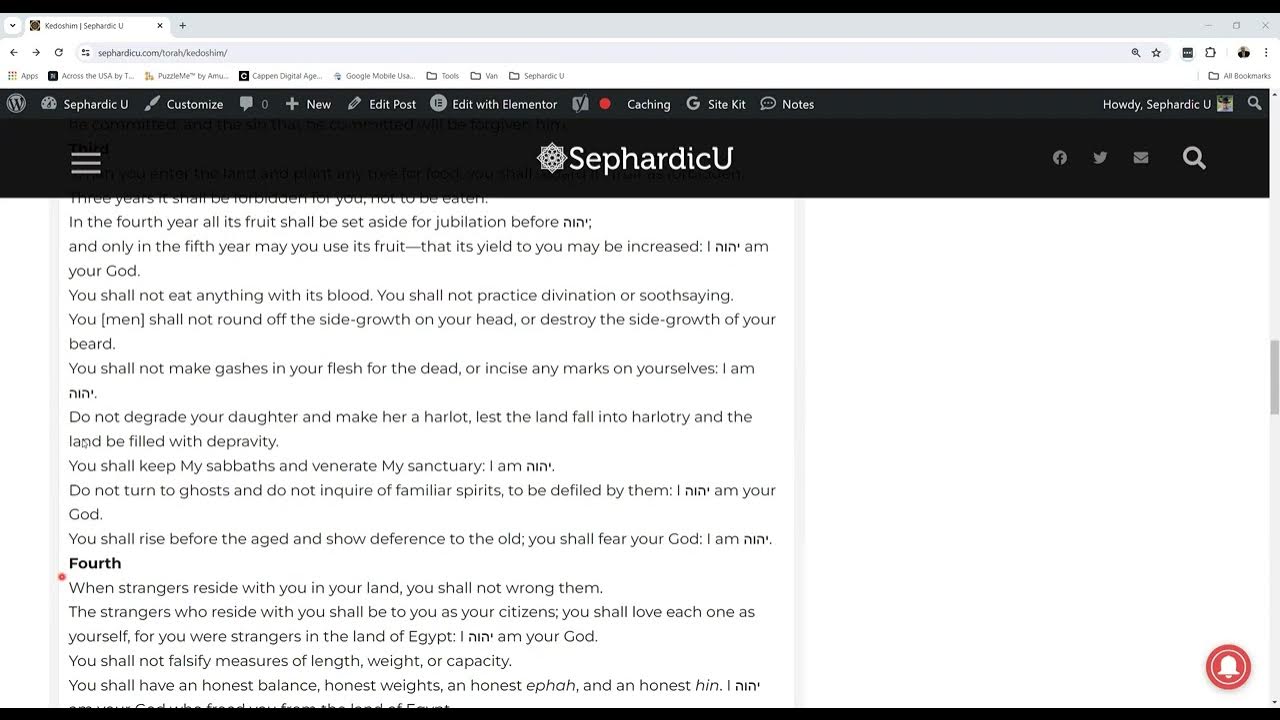Yom Kippur Eve and Teshuva
- The guiding rule in observing Kippur is maintaining a balance between respecting the sanctity of the day and one’s physical health.
- According to Shulhan Arukh, the practice of doing Kapparot with chickens should be eliminated. (see appendix)
- We must ask for forgiveness and reconcile with those we have hurt. If applicable, payments should be made. A token apology will not suffice.
- Whether we repent for transgressions of laws between us and God, or between us and others, the steps of Teshuva should be followed: recognition of the wrongdoing, genuine repentance, a commitment to never repeat the act.
- The one being apologized to should be willing to forgive, but if the apology is not sincere it can be rejected, especially when dealing with a habitual offender. If you see a pattern of offenses and genuine apologies from the same person, it is better to keep a distance in the future, even after forgiving.
- Confession on Minha of Kippur Eve, as well as on Kippur itself, should be focused on things we are aware of and want to repent for. It is better to say your personal prayer than use the alphabetical lists printed in the Siddur, which should be viewed as a reminder what we might have done.
- It is recommended to eat the last meal an hour or two before the fast.
Prohibitions of Yom Kippur
- Five actions are mentioned in Halakha as forbidden on Kippur, besides the laws of Shabbat which apply to Kippur as well: Eating and drinking; Applying oils; Washing; Wearing leather shoes; Having marital relationships.
- Of the five, only eating and drinking are punishable, since they are the only ones with basis in the Torah. The rest are instituted by the rabbis and supported by biblical texts, and it is therefore easier to allow exceptions in observing them.
Water
- Perhaps the most difficult aspect of the fast is not drinking, and quite often people push themselves to the limit and put their lives at risk. One example is that of R. Yisrael of Ruzhyn, who resisted the urge to drink on Kippur, even against his doctor’s advice, and passed away shortly afterwards at the age of 54.
- R. Yaakov Haggiz (1620-1674) writes that it is possible that by biblical law one is not forbidden to drink water, since it is not nutritious. We can rely on his opinion for cases of need, as shall be explained below.
Medical conditions
- If there are clear doctor’s orders, they should be followed. Attempting extreme piety and fasting against doctor’s orders is a transgression.
- Expectant and nursing mothers can sip water all day in small quantities (less than 3 fl. oz.) and in intervals of no less than five minutes.
- Pills taken on a regular basis can be taken with less than 3 fl. oz. of water. The same applies for those who need to take pills for severe headaches, including caffeine pills.
- If one feels the need to eat or drink because of physical conditions, water and food can be consumed in small quantities (less than 3 fl. oz. and 2 oz., respectively). It is recommended to use high-energy foods. They should be consumed in intervals of no less than five minutes.
- If one feels that following these rules will not suffice, and might cause him damage, he should eat and drink regularly until he is no longer at risk.
- Using mouthwash or brushing teeth is allowed on Kippur, and maybe even mandatory because of dignity and respect towards others.
- Fasting before bar or bat Mitzvah is just a custom and children should not be pushed beyond their limits or made to feel guilty if they “broke” the fast.
- Parents and caregivers should practice great caution during Kippur, since the children or adults under their care might feel too proud or religiously committed to ask for food or water.
Other Prohibitions
- Washing is forbidden only when for pleasure and permitted when it is for cleanliness. In antiquity only hands soiled with dirt or worse were considered unclean, but today, with our heightened hygiene awareness, one can wash hands regularly with soap when needed.
- Washing the face is allowed for those who otherwise will not feel dignified or relaxed.
- The prohibition of applying oils to the skin refers only to actions done for pleasure, and it is therefore allowed to use medicinal creams, lip balm, Vaseline, deodorants of all kinds, perfume, or eau de cologne.
- If one who has only leather shoes and cannot walk barefoot because of danger, or discomfort, he can wear these shoes.
- Similarly, if leather shoes are essential to provide protection from rain or snow, or for orthopedic needs, they may be used.
- Abstinence is limited to intimate relationships and does not include other forms of affection.
Kol Nidre
- The Kol Nidre ritual, at the opening of Yom Kippur services, is largely symbolic. Though the text suggests that it is an official court session, meant to annul unwanted vows, the truth is that it has no legal validity.
- Those who view Kol Nidre as a legal process, argue that since a court cannot convene at night, the text should be recited before sunset. This causes some synagogues to struggle with Kippur Eve schedule. This should not be a concern, since Kol Nidre has no legal significance.
Prayers
- The prayers of Yom Kippur are peppered with many poems and supplications, many of which are difficult to understand even for Hebrew speakers, and others to which a modern reader might not easily relate. The time we spend in the synagogue on Kippur should be meaningful and purposeful, and we should avoid reciting prayers by rote or if we do not relate to them.
- The essential components of the prayers are Shema and Amidah, and one can choose to read only those parts in each prayer. Such was the custom of the first Ashkenazi Chief Rabbi of Israel, rabbi Avraham Yitzhak HaCohen Kook, who would spend hours reciting those parts.
- The purpose of Yom Kippur is to prompt us to acknowledge our mistakes and repent. If this is achieved by tuning in to and following the poems and Selihot, that is wonderful, and if not, it is better to use the time in the synagogue or home for reflection and contemplation.
- We should use whatever means available and appropriate to reflect on mending our mistakes and cultivating an aspiration for spiritual growth.
- Rabbenu Yaakov ben HaRosh mentions several practices of additions to the prayer. He writes that most of the additions are optional, and that the prayer should not be stretched to the point where Shema or Musaf are not recited on time.
- In general, the religious and lay leaders of the synagogue should bear in mind that on Yom Kippur they get a mixed crowd, with varied levels of expertise and interest in prayers. The common working assumption is “let us keep them here while we can”, but from experience I have learned that a shorter and more meaningful service is beneficial to all. Those who are not well-versed do not feel that they were sitting in the synagogue as extras for prolonged periods, while the more seasoned shul goers are not distracted by the conversations of those who are bored. Those interested in more poems and Selihot can remain in the synagogue and recite them after the official services have been concluded.
- One can read portions of the Tanakh, especially Psalms, Proverbs, Job, and the prophets Isaiah, Jeremiah, Hosea, and Micah. Many synagogues offer Yom Kippur readers, and one can also read the writings of the Mussar movement, Hassidic teachings, or general literature such as Man’s Search for Meaning by Viktor Frankl.
- Most orthodox communities are reluctant to translate prayers into the spoken language. However, the Tur and Shulhan Arukh both rule that one could recite the prayers in any language he chooses. Especially when reciting the very long prayers of Kippur, it would be advisable to use that ruling of the Shulhan Arukh, and not only translate prayers recited in Hebrew, but replace certain segments with the translation, to avoid redundancy and burdening the community.
- If this is not possible, it is recommended that during the Selihot and the repetition of Musaf, classes and prayer workshops will be offered to those who find it difficult to follow the prayers and remain focused.
Neila and Ending
- Birkat Kohanim of Neila should be said, preferably, before sunset. However, in most cases the sunset deadline is not met, and if it is, too much time is left until the fast is over, and as a result, the cantors drag the prayer and burden the community. It is better therefore to rely on the opinion of Rabbenu Tam’s that night starts much later, and push Birkat Kohanim to about 20 minutes after sunset, thus making perfect time for the end of Tefila and Arvit.
- In some synagogues, there is a massive exodus right after the Shofar is blown. Many congregants, who stay for Arvit, get very frustrated with the noise and commotion, and of course it disrupts the Arvit prayer. It is therefore suggested to wait with the Shofar, start Arvit about 15 minutes before the fast is over, and then blow shofar at the simultaneous end of Arvit and the fast.
- If this is not possible, it is better to conduct Havdalah immediately when the fast is over and let people break the fast. Then, when most people have left the synagogue, and those who stayed have quenched their thirst and satiated their hunger, they can pray with calmness and intention.
- There is a custom of starting to build the Sukkah immediately after Kippur, but it is of course not mandatory. It is a symbolic act which shows that we are eager to observe the Mitzvoth, but it should not put anyone in a predicament. The sukkah can be built before Kippur, or, if one is too tired after the fast, it can be built later.
May we all have an easy and meaningful Kippur, one in which we will be able to reconcile, forgive, and propel ourselves to new spiritual heights.
Shana Tova VaHatima Tova
Rabbi Haim Ovadia
Appendix: Kapparot
In Tur Orah Haim, laws of Kippur (ch. 605), we find the following:
Some communities have the tradition to slaughter a rooster to atone for one’s sins. The Geonim of Babylonia, who were asked about the practice, answered that while it seems that the rooster is a symbolic substitute for the sinner who should have died, they do not know why it is a rooster and not any other animal. They then offer three possibilities:
- Roosters live in the house [thus sharing their fate with humans.]
- There is no need to insist on using roosters, and indeed, wealthier people use a ram.
- The Hebrew name for a rooster is גבר – a man.
The cantor puts his hand on the rooster’s head and places it on top of the head of the candidate for atonement. He says: “This is instead of that; This replaces that; This takes away from that”. He then circles the rooster above the man’s head and says some verses from Psalm 107, adding the wordsנפש תחת נפש – a soul for a soul. He repeats the verses three times, and then places his hands on the rooster’s head, in the manner used for a sacrifice in the Temple and slaughters the rooster. It is customary to give the rooster to the poor to atone for one’s soul [by doing charity], and to throw the intestines on the roof to feed the birds [of prey].
This description raises several problems: 1. The practice smells of paganism; 2. One is not allowed to perform a ritual which resembles a sacrifice in the Temple; 3. Giving the rooster to the poor is insulting, suggesting that they consume the sins of the giver.
Indeed, R. Yosef Karo, in his commentary Bet Yosef, writes in the name of Rashba:
Though I heard from God-fearing people from Germany that all the rabbis in their country follow that practice, I have stopped it in my community, and Nahmanides forbade it because it is a pagan practice.
In his Shulhan Arukh, R. Karo wrote more emphatically:
The practice of slaughtering a rooster for each male should be stopped.
If you are interested in a concrete conclusion you do not to read further, just know that conducting Kapparot with birds is forbidden because of its resemblance of pagan magic and beliefs. If you want to do Kapparot, use money and give it to charity.
Historically, however, this did not happen in most places. The practice continued to flourish and develop and was extended from males only to the whole family. As women were added, someone suggested that hens should be used for women and roosters for men. Later, there was a concern that a pregnant woman would not have full coverage, and so people started to use three birds for a pregnant woman: one hen for her, and a hen and rooster to cover for a male or female fetus (Thank God for sonograms!). One commentator even suggested that five birds should be used, three females and two males, in case she is carrying twins, but concluded that such pregnancies are not common.
Other elements were added that pushed the practice towards mystical realms. It was told about R. Yaakov Mullen (aka Maharil, Germany 1360-1427) that he would use only white roosters, to suggest that the blood-red sins turn white as snow. Later generations defended that practice which seemed to attribute magical powers to a white rooster, by saying that Maharil would not search for it, and would only choose it from among other birds when available. His disciple, R. Yaakov Weil, wrote that the initials of the Hebrew formula recited over the rooster’s head forms the word חתך – which is the name of the angel of life. Finally, it was R. Yaakov of Emden (aka Yaavetz, Germany 1697-1776), who composed a Kabbalistic introduction to the Kapparot and included it in his Siddur:
I am about to perform this atonement and heal its root in the supreme world. May it be Your will that this hour, in which a thread of mercy is amplified, will become a time of kindness and compassion. And in the merit of slaughtering this גבר, the five rigors which are the foundation of man will be sweetened, as they connect to the holy feminine world… through which our souls are born. Rebuild our Temple and let us send away the scapegoat, and we will sacrifice goats to sweeten the rigor and strength of the queen.
It is amazing, and worrisome, to see how a practice takes a life (or better yet, death) of its own, and is transformed from folklore into a mystical practice with extensive Halakhic literature. Additionally, the analogy Yaavetz makes between the rooster and the scapegoat is intriguing, as it is based on the understanding that the scapegoat would carry away the sins to the desert to get rid of them. This is based on Midrashic interpretation, but I would like to suggest that the purpose of confessing the sins of the whole nation over the goat’s head and sending it to the desert was meant to convey the opposite message.
The scapegoat, which according to the Torah roams free in the desert, represents the idea that though we repent for our misdeeds, we never know the full extent of their impact. Years after our repentance, a wrong move or word could still cause negative reverberations.
Thus, the most important lesson of Kippur, and of the scapegoat, is not that I can cast away all my sins with a goat, a rooster, or some coins, but rather that I should always be aware of my actions, preempting a transgression or a wrongdoing, as well as their far-reaching and incalculable consequences.
Ref:
1 עלי תמר יומא פרק ח: אדמו”ר הרה”ק ר”י מריזין זצ”ל נפטר מצמאון הלב שנגרם לו כעדות הרופא ביום הכיפורים האחרון כאשר התגבר
עליו בולמוס של צמא והשלים את תעניתו מבלי לגמוע טיפת מים במשך היממה
2 הרב יעקב חאגיז, שו”ת הלכות קטנות חלק ב סימן רפב: אפשר דמן התורה אינו חייב אלא אכל מידי דמיזן אבל מים אינן זנין כלל; וראה הרב
יצחק זילברשטיין (1934-), חשוקי חמד יומא דף עד עמוד ב: עוד אפשר להוסיף שיתכן שיש גם לחוש לדעת ההלכות קטנות… מים אינן זנין
כלל כמו שכ’ הרמב”ם
3 שולחן ערוך, אורח חיים, תריג, א: לא אסרו אלא רחיצה של תענוג
4 שם, סימן תריג, ד: מי שהוא אסטניס ואין דעתו מיושבת עליו עד שיקנח פניו במים מותר
5 שם, סימן תריד, ד: מותר כל אדם לנעול סנדל מחמת עקרב וכיוצא בו… ואם ירדו גשמים ורוצה לילך לביתו מבית הכנסת או להיפך, והוא
איסטניס, מותר לנעול מנעליו עד שמגיע למקומו
6 טור אורח חיים, סימן תרכ: …וטוב שלא להאריך בהם כל כך כדי לקרות ק”ש בעונתה… יותר נכון מנהג טוליטולה שאין מוסיפין בהן… ולא
דבר קצוב הוא ולא חובה… ומה שירצו או להרבות או למעט הרשות בידם ולפנינו אין אומרים אלא דבר מועט… וטוב לקצר בפיוטים
ובסליחות שחרית
7 טור אורח חיים, סימן קא: ויכול להתפלל בכל לשון שירצה; שולחן ערוך, שם: ויכול להתפלל בכל לשון שירצה… תפלה הקבועה לצבור,
אפילו יחיד יכול לאומרה בכל לשון; ויש אומרים דאף יחיד כששואל צרכיו יכול לשאול בכל לשון שירצה









